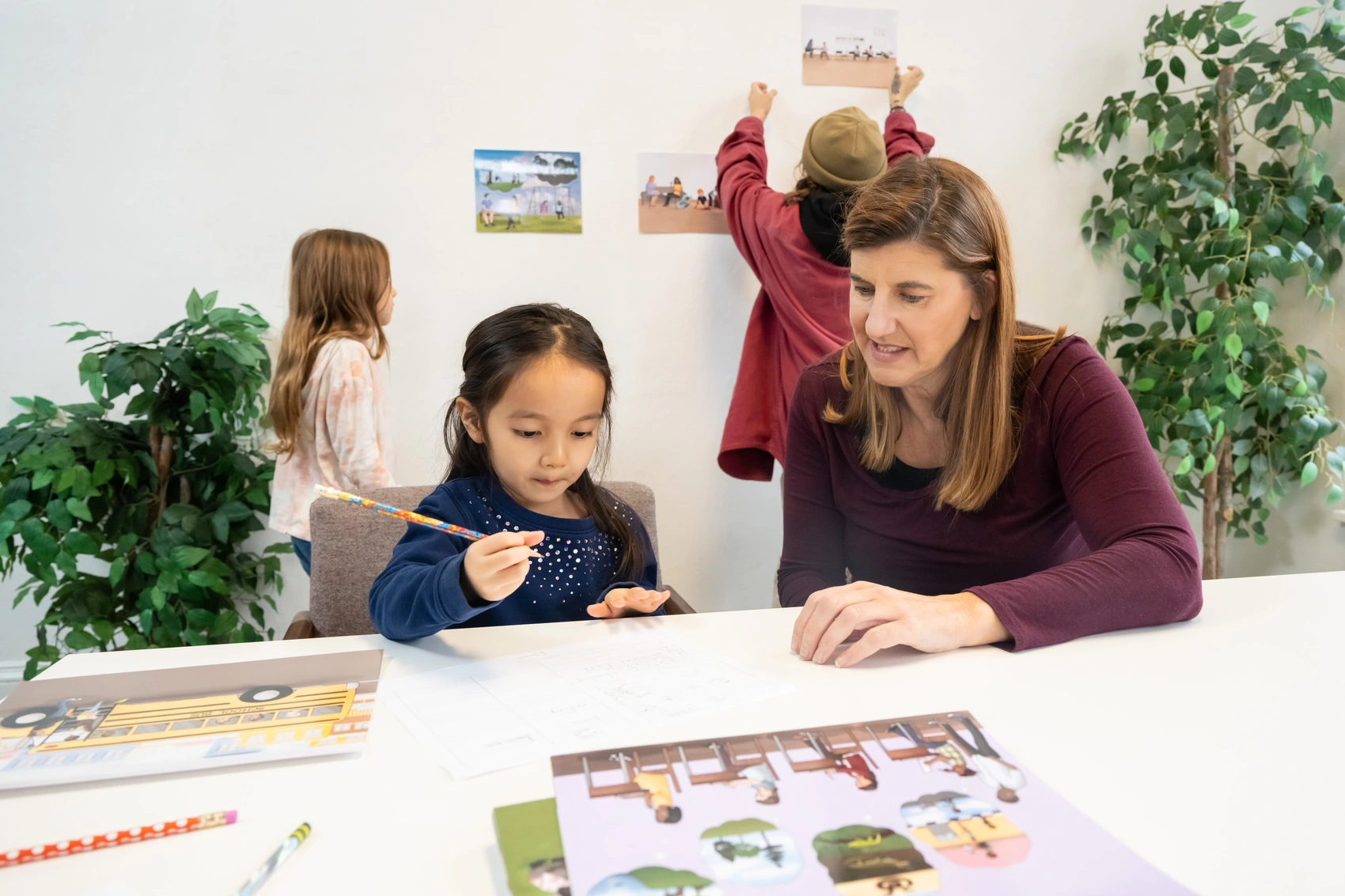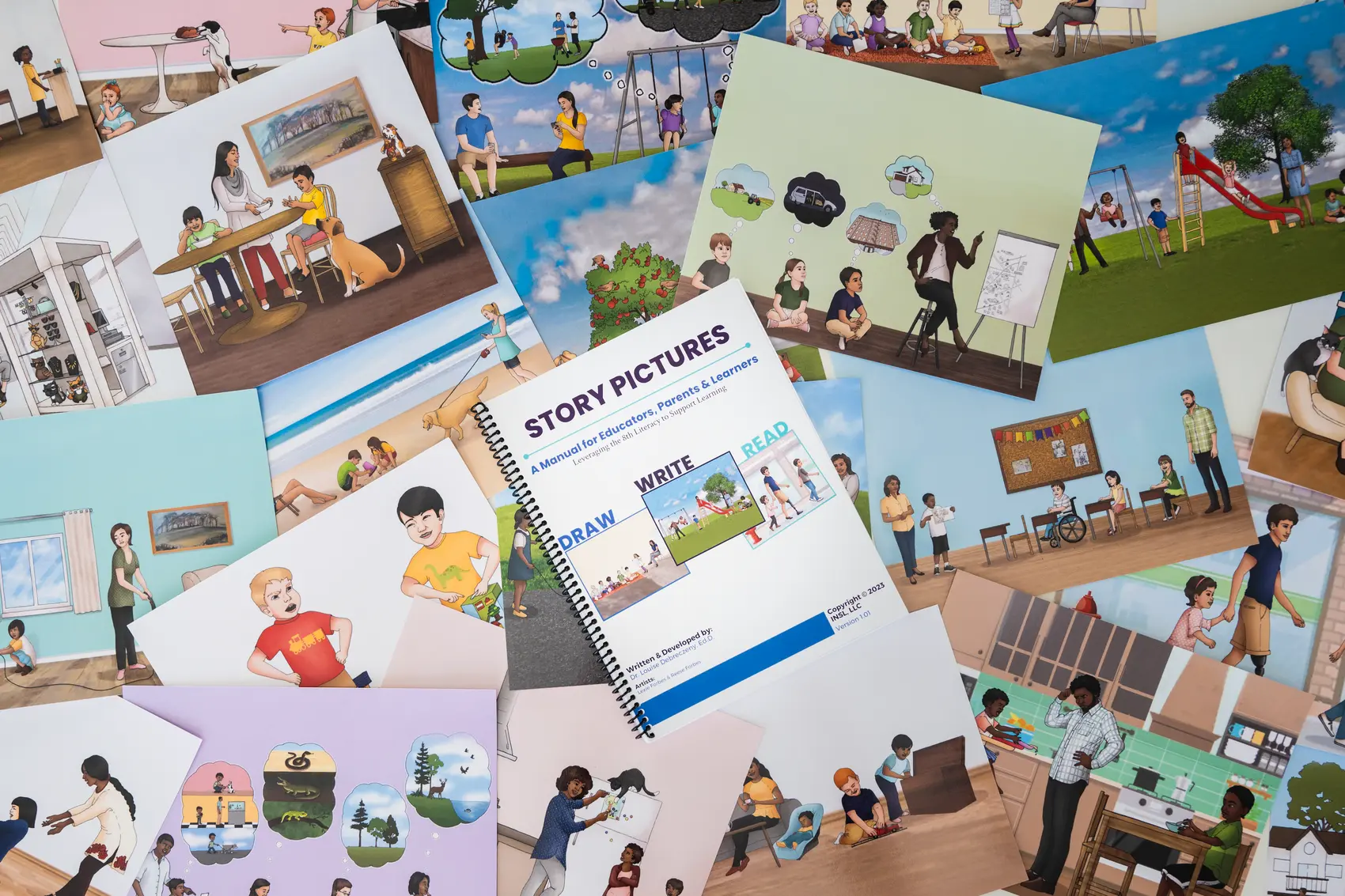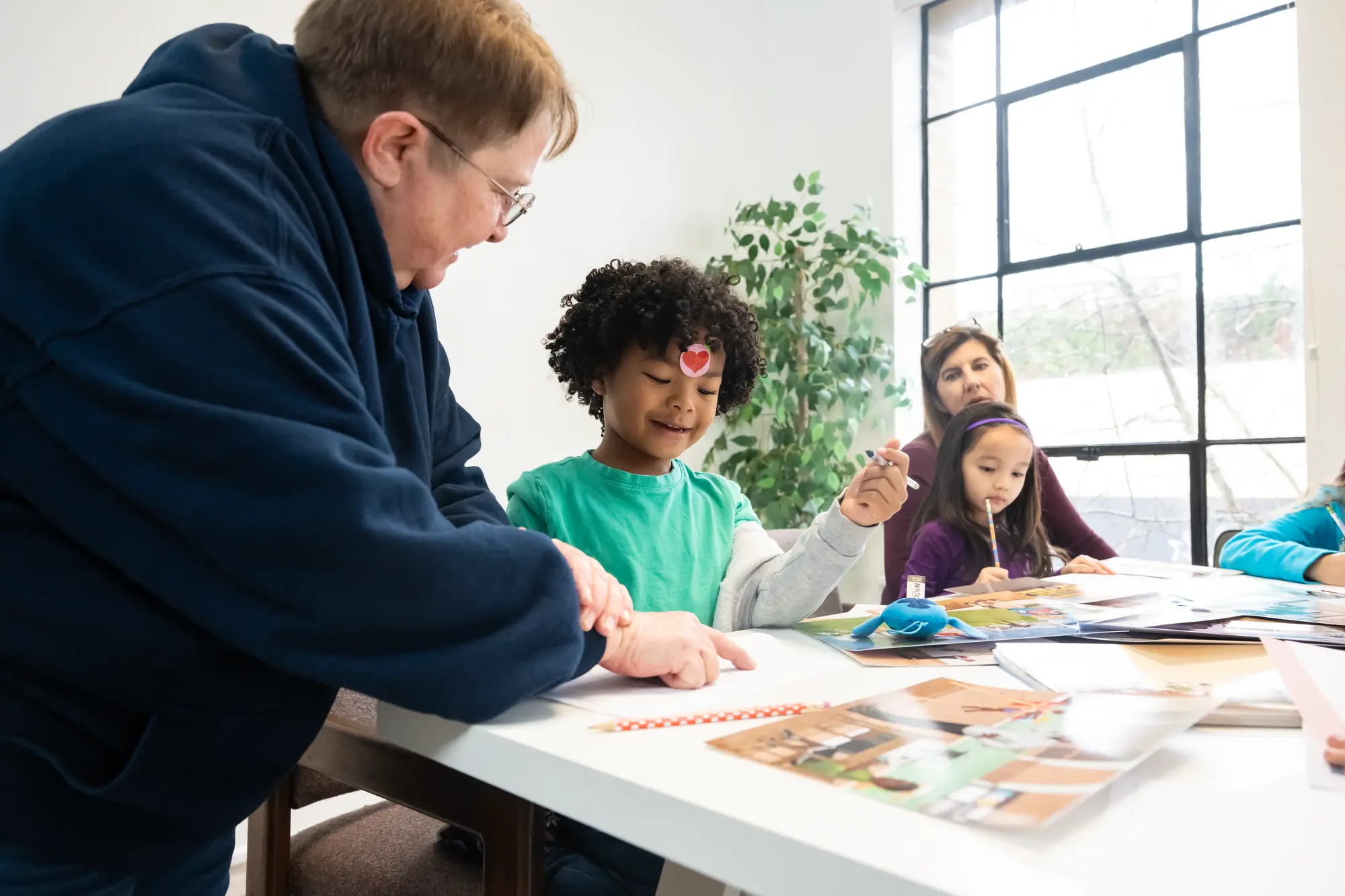Enhancing Literacy with Drawing
The Importance of Visual and Visual Motor Learning
The Seven Processes of Literacy
The conventional seven processes of literacy—reading, writing, listening, speaking, thinking, calculating, and viewing—serve as the bedrock of educational practices in schools. Typically, literacy instruction begins with teaching reading through phonics, helping students decode text. Writing follows a similar phonetic approach to aid students in encoding their thoughts into written form. Opportunities to speak and listen are interwoven throughout the school day, as students engage in discussions with peers and teachers. Calculation and thinking are paired activities, where thinking is more passive and calculating is more active. Viewing encompasses the observation of videos, pictures, and other visual aids, supporting students’ understanding through visual input.
Despite the effectiveness of these activities for many learners, a critical component for visual and visual motor learners is missing. While these seven processes pair up as expressive and receptive activities—listening with speaking, reading with writing, calculating with thinking—viewing remains a solely receptive process. This imbalance highlights the need for an expressive counterpart to viewing, essential for visual and visual motor learners.

Thinking about the eight psychological processes of literacy
Students are visual or visual motor learners, necessitating an adaptation in teaching methods to cater to their unique learning needs. In today’s educational landscape, teachers typically offer students opportunities to engage in reading, writing, listening, speaking, thinking, calculating, and viewing. These seven processes are foundational to literacy education, particularly benefiting auditory learners who can effectively process and retain information through auditory input.
Visual and visual motor learners require visual and motor input to fully grasp new ideas, and this crucial element is often missing in traditional literacy instruction.
The Missing Piece: Drawing
For visual and visual motor learners, the addition of drawing is crucial. Drawing, not as an artistic endeavor but as an expression of thinking, serves as the eighth process of literacy. Stick figure drawing, which anyone can learn regardless of artistic talent, allows learners to externalize their thoughts. This process reduces cognitive load by freeing learners from the need to hold complex mental images, facilitating deeper thinking and comprehension.
Drawing supports literacy in multiple ways. Firstly, it enables all learners to visualize and represent ideas, thus enhancing cognitive processing and understanding. For visual and visual motor learners, drawing is particularly beneficial as it aligns with their neurobiological learning modality, involving the hand and eye in creating visual representations. This method is especially useful for those who struggle with phonics-based reading instruction. By incorporating drawing, writing, and reading, these learners can better grasp and retain new concepts.

Clinical Services
At INSL LLC we believe in working closely with families to support children and adults with learning differences. Our consultants specialize in using drawing, the eighth literacy process, to assist visual and visual motor learners to learn, not just literacy but also how to be prosocial at home, school and in the workplace. You can learn more about our clinical services on the clinical services page of this website.
Integrating Drawing into Literacy Activities
Incorporating drawing into literacy activities can be done in various ways. Students can draw their ideas before writing, using the drawings as a pre-writing strategy, which can either replace or precede traditional outlining. While reading, students can draw to better visualize and remember ideas, allowing teachers to assess comprehension through comparison of drawings with the text. This practice also helps identify misperceptions, guiding teachers to address misunderstandings and clarify complex phrases or idioms. Creating a visual dictionary through drawing and writing reinforces learning and provides a valuable reference tool, particularly beneficial for visual motor learners.
The Eighth Process of Literacy – Picture Stories
To effectively support all students, especially visual and visual motor learners, it is essential to incorporate drawing as the eighth process of literacy. This approach complements the traditional seven processes—reading, writing, listening, speaking, thinking, calculating, and viewing—by adding a critical expressive component to visual learning. By integrating drawing into literacy instruction, educators can create a more inclusive and effective learning environment that caters to the diverse needs of their students, ultimately enhancing overall literacy and comprehension.

Visual and Visual Motor Learning Materials
We offer books, manuals and workshop video content for school districts, educators and parents that address the 8th literacy, drawing! You can access content and materials, including our best selling product Story Pictures, available in both English and Spanish below.



